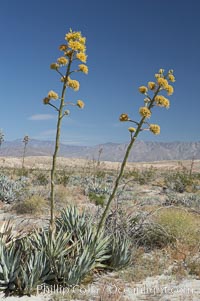
Desert agave, also known as the Century Plant, blooms in spring in Anza-Borrego Desert State Park. Desert agave is the only agave species to be found on the rocky slopes and flats bordering the Coachella Valley. It occurs over a wide range of elevations from 500 to over 4,000. It is called century plant in reference to the amount of time it takes it to bloom. This can be anywhere from 5 to 20 years. They send up towering flower stalks that can approach 15 feet in height. Sending up this tremendous display attracts a variety of pollinators including bats, hummingbirds, bees, moths and other insects and nectar-eating birds.
Species: Desert agave, Agave deserti
Image ID: 11563
Species: Desert agave, Agave deserti
Image ID: 11563
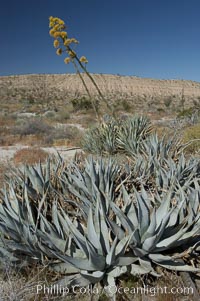
Desert agave, also known as the Century Plant, blooms in spring in Anza-Borrego Desert State Park. Desert agave is the only agave species to be found on the rocky slopes and flats bordering the Coachella Valley. It occurs over a wide range of elevations from 500 to over 4,000. It is called century plant in reference to the amount of time it takes it to bloom. This can be anywhere from 5 to 20 years. They send up towering flower stalks that can approach 15 feet in height. Sending up this tremendous display attracts a variety of pollinators including bats, hummingbirds, bees, moths and other insects and nectar-eating birds.
Species: Desert agave, Agave deserti
Image ID: 11564
Species: Desert agave, Agave deserti
Image ID: 11564
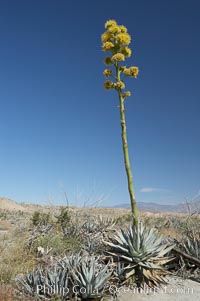
Desert agave, also known as the Century Plant, blooms in spring in Anza-Borrego Desert State Park. Desert agave is the only agave species to be found on the rocky slopes and flats bordering the Coachella Valley. It occurs over a wide range of elevations from 500 to over 4,000. It is called century plant in reference to the amount of time it takes it to bloom. This can be anywhere from 5 to 20 years. They send up towering flower stalks that can approach 15 feet in height. Sending up this tremendous display attracts a variety of pollinators including bats, hummingbirds, bees, moths and other insects and nectar-eating birds.
Species: Desert agave, Agave deserti
Image ID: 11565
Species: Desert agave, Agave deserti
Image ID: 11565
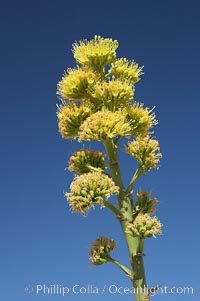
Desert agave, also known as the Century Plant, blooms in spring in Anza-Borrego Desert State Park. Desert agave is the only agave species to be found on the rocky slopes and flats bordering the Coachella Valley. It occurs over a wide range of elevations from 500 to over 4,000. It is called century plant in reference to the amount of time it takes it to bloom. This can be anywhere from 5 to 20 years. They send up towering flower stalks that can approach 15 feet in height. Sending up this tremendous display attracts a variety of pollinators including bats, hummingbirds, bees, moths and other insects and nectar-eating birds.
Species: Desert agave, Agave deserti
Image ID: 11566
Species: Desert agave, Agave deserti
Image ID: 11566
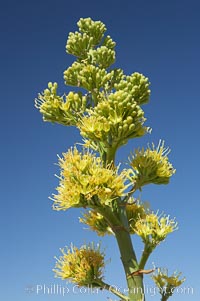
Desert agave, also known as the Century Plant, blooms in spring in Anza-Borrego Desert State Park. Desert agave is the only agave species to be found on the rocky slopes and flats bordering the Coachella Valley. It occurs over a wide range of elevations from 500 to over 4,000. It is called century plant in reference to the amount of time it takes it to bloom. This can be anywhere from 5 to 20 years. They send up towering flower stalks that can approach 15 feet in height. Sending up this tremendous display attracts a variety of pollinators including bats, hummingbirds, bees, moths and other insects and nectar-eating birds.
Species: Desert agave, Agave deserti
Image ID: 11567
Species: Desert agave, Agave deserti
Image ID: 11567
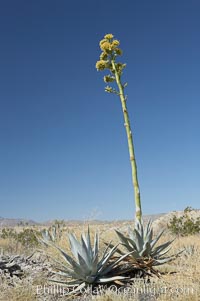
Desert agave, also known as the Century Plant, blooms in spring in Anza-Borrego Desert State Park. Desert agave is the only agave species to be found on the rocky slopes and flats bordering the Coachella Valley. It occurs over a wide range of elevations from 500 to over 4,000. It is called century plant in reference to the amount of time it takes it to bloom. This can be anywhere from 5 to 20 years. They send up towering flower stalks that can approach 15 feet in height. Sending up this tremendous display attracts a variety of pollinators including bats, hummingbirds, bees, moths and other insects and nectar-eating birds.
Species: Desert agave, Agave deserti
Image ID: 11568
Species: Desert agave, Agave deserti
Image ID: 11568
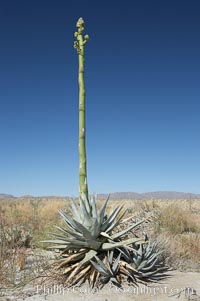
Desert agave, also known as the Century Plant, blooms in spring in Anza-Borrego Desert State Park. Desert agave is the only agave species to be found on the rocky slopes and flats bordering the Coachella Valley. It occurs over a wide range of elevations from 500 to over 4,000. It is called century plant in reference to the amount of time it takes it to bloom. This can be anywhere from 5 to 20 years. They send up towering flower stalks that can approach 15 feet in height. Sending up this tremendous display attracts a variety of pollinators including bats, hummingbirds, bees, moths and other insects and nectar-eating birds.
Species: Desert agave, Agave deserti
Image ID: 11569
Species: Desert agave, Agave deserti
Image ID: 11569
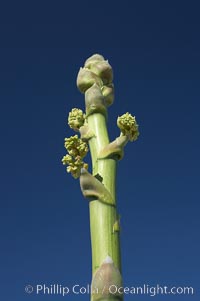
Desert agave, also known as the Century Plant, blooms in spring in Anza-Borrego Desert State Park. Desert agave is the only agave species to be found on the rocky slopes and flats bordering the Coachella Valley. It occurs over a wide range of elevations from 500 to over 4,000. It is called century plant in reference to the amount of time it takes it to bloom. This can be anywhere from 5 to 20 years. They send up towering flower stalks that can approach 15 feet in height. Sending up this tremendous display attracts a variety of pollinators including bats, hummingbirds, bees, moths and other insects and nectar-eating birds.
Species: Desert agave, Agave deserti
Image ID: 11570
Species: Desert agave, Agave deserti
Image ID: 11570
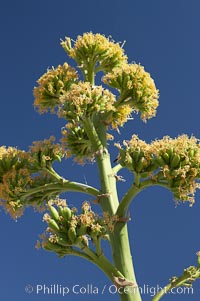
Desert agave, also known as the Century Plant, blooms in spring in Anza-Borrego Desert State Park. Desert agave is the only agave species to be found on the rocky slopes and flats bordering the Coachella Valley. It occurs over a wide range of elevations from 500 to over 4,000. It is called century plant in reference to the amount of time it takes it to bloom. This can be anywhere from 5 to 20 years. They send up towering flower stalks that can approach 15 feet in height. Sending up this tremendous display attracts a variety of pollinators including bats, hummingbirds, bees, moths and other insects and nectar-eating birds.
Species: Desert agave, Agave deserti
Image ID: 11571
Species: Desert agave, Agave deserti
Image ID: 11571
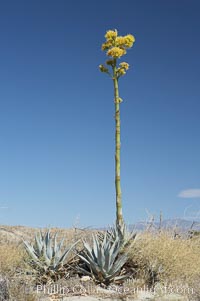
Desert agave, also known as the Century Plant, blooms in spring in Anza-Borrego Desert State Park. Desert agave is the only agave species to be found on the rocky slopes and flats bordering the Coachella Valley. It occurs over a wide range of elevations from 500 to over 4,000. It is called century plant in reference to the amount of time it takes it to bloom. This can be anywhere from 5 to 20 years. They send up towering flower stalks that can approach 15 feet in height. Sending up this tremendous display attracts a variety of pollinators including bats, hummingbirds, bees, moths and other insects and nectar-eating birds.
Species: Desert agave, Agave deserti
Image ID: 11572
Species: Desert agave, Agave deserti
Image ID: 11572
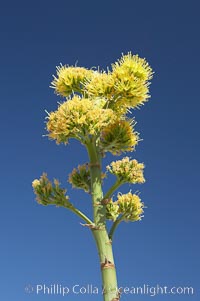
Desert agave, also known as the Century Plant, blooms in spring in Anza-Borrego Desert State Park. Desert agave is the only agave species to be found on the rocky slopes and flats bordering the Coachella Valley. It occurs over a wide range of elevations from 500 to over 4,000. It is called century plant in reference to the amount of time it takes it to bloom. This can be anywhere from 5 to 20 years. They send up towering flower stalks that can approach 15 feet in height. Sending up this tremendous display attracts a variety of pollinators including bats, hummingbirds, bees, moths and other insects and nectar-eating birds.
Species: Desert agave, Agave deserti
Image ID: 11573
Species: Desert agave, Agave deserti
Image ID: 11573
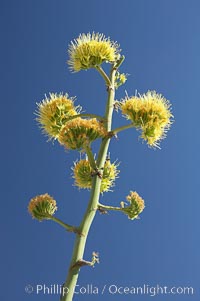
Desert agave, also known as the Century Plant, blooms in spring in Anza-Borrego Desert State Park. Desert agave is the only agave species to be found on the rocky slopes and flats bordering the Coachella Valley. It occurs over a wide range of elevations from 500 to over 4,000. It is called century plant in reference to the amount of time it takes it to bloom. This can be anywhere from 5 to 20 years. They send up towering flower stalks that can approach 15 feet in height. Sending up this tremendous display attracts a variety of pollinators including bats, hummingbirds, bees, moths and other insects and nectar-eating birds.
Species: Desert agave, Agave deserti
Image ID: 11576
Species: Desert agave, Agave deserti
Image ID: 11576
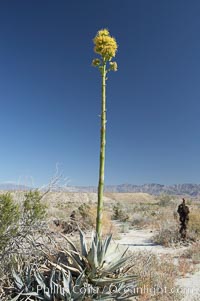
Desert agave, also known as the Century Plant, blooms in spring in Anza-Borrego Desert State Park. Desert agave is the only agave species to be found on the rocky slopes and flats bordering the Coachella Valley. It occurs over a wide range of elevations from 500 to over 4,000. It is called century plant in reference to the amount of time it takes it to bloom. This can be anywhere from 5 to 20 years. They send up towering flower stalks that can approach 15 feet in height. Sending up this tremendous display attracts a variety of pollinators including bats, hummingbirds, bees, moths and other insects and nectar-eating birds.
Species: Desert agave, Agave deserti
Image ID: 11577
Species: Desert agave, Agave deserti
Image ID: 11577
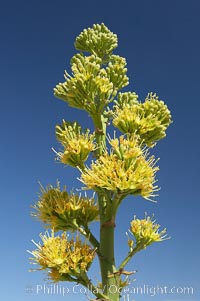
Desert agave, also known as the Century Plant, blooms in spring in Anza-Borrego Desert State Park. Desert agave is the only agave species to be found on the rocky slopes and flats bordering the Coachella Valley. It occurs over a wide range of elevations from 500 to over 4,000. It is called century plant in reference to the amount of time it takes it to bloom. This can be anywhere from 5 to 20 years. They send up towering flower stalks that can approach 15 feet in height. Sending up this tremendous display attracts a variety of pollinators including bats, hummingbirds, bees, moths and other insects and nectar-eating birds.
Species: Desert agave, Agave deserti
Image ID: 11578
Species: Desert agave, Agave deserti
Image ID: 11578
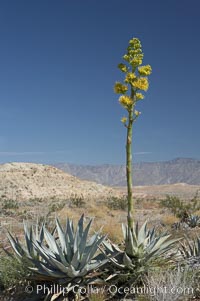
Desert agave, also known as the Century Plant, blooms in spring in Anza-Borrego Desert State Park. Desert agave is the only agave species to be found on the rocky slopes and flats bordering the Coachella Valley. It occurs over a wide range of elevations from 500 to over 4,000. It is called century plant in reference to the amount of time it takes it to bloom. This can be anywhere from 5 to 20 years. They send up towering flower stalks that can approach 15 feet in height. Sending up this tremendous display attracts a variety of pollinators including bats, hummingbirds, bees, moths and other insects and nectar-eating birds.
Species: Desert agave, Agave deserti
Image ID: 11579
Species: Desert agave, Agave deserti
Image ID: 11579
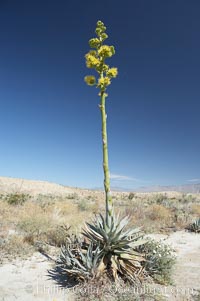
Desert agave, also known as the Century Plant, blooms in spring in Anza-Borrego Desert State Park. Desert agave is the only agave species to be found on the rocky slopes and flats bordering the Coachella Valley. It occurs over a wide range of elevations from 500 to over 4,000. It is called century plant in reference to the amount of time it takes it to bloom. This can be anywhere from 5 to 20 years. They send up towering flower stalks that can approach 15 feet in height. Sending up this tremendous display attracts a variety of pollinators including bats, hummingbirds, bees, moths and other insects and nectar-eating birds.
Species: Desert agave, Agave deserti
Image ID: 11580
Species: Desert agave, Agave deserti
Image ID: 11580
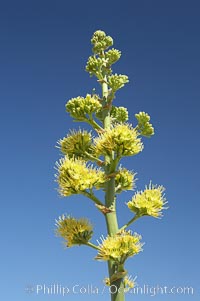
Desert agave, also known as the Century Plant, blooms in spring in Anza-Borrego Desert State Park. Desert agave is the only agave species to be found on the rocky slopes and flats bordering the Coachella Valley. It occurs over a wide range of elevations from 500 to over 4,000. It is called century plant in reference to the amount of time it takes it to bloom. This can be anywhere from 5 to 20 years. They send up towering flower stalks that can approach 15 feet in height. Sending up this tremendous display attracts a variety of pollinators including bats, hummingbirds, bees, moths and other insects and nectar-eating birds.
Species: Desert agave, Agave deserti
Image ID: 11581
Species: Desert agave, Agave deserti
Image ID: 11581
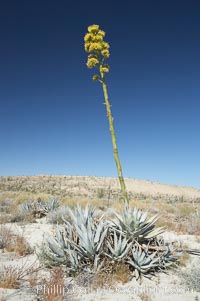
Desert agave, also known as the Century Plant, blooms in spring in Anza-Borrego Desert State Park. Desert agave is the only agave species to be found on the rocky slopes and flats bordering the Coachella Valley. It occurs over a wide range of elevations from 500 to over 4,000. It is called century plant in reference to the amount of time it takes it to bloom. This can be anywhere from 5 to 20 years. They send up towering flower stalks that can approach 15 feet in height. Sending up this tremendous display attracts a variety of pollinators including bats, hummingbirds, bees, moths and other insects and nectar-eating birds.
Species: Desert agave, Agave deserti
Image ID: 11582
Species: Desert agave, Agave deserti
Image ID: 11582
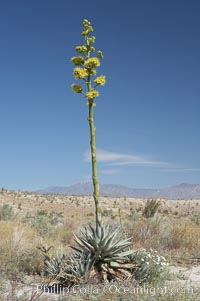
Desert agave, also known as the Century Plant, blooms in spring in Anza-Borrego Desert State Park. Desert agave is the only agave species to be found on the rocky slopes and flats bordering the Coachella Valley. It occurs over a wide range of elevations from 500 to over 4,000. It is called century plant in reference to the amount of time it takes it to bloom. This can be anywhere from 5 to 20 years. They send up towering flower stalks that can approach 15 feet in height. Sending up this tremendous display attracts a variety of pollinators including bats, hummingbirds, bees, moths and other insects and nectar-eating birds.
Species: Desert agave, Agave deserti
Image ID: 11583
Species: Desert agave, Agave deserti
Image ID: 11583
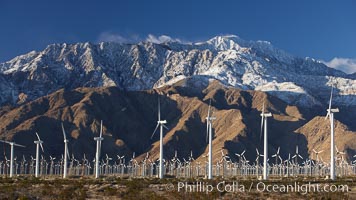
Wind turbines and Mount San Jacinto, rise above the flat floor of the San Gorgonio Pass near Palm Springs, provide electricity to Palm Springs and the Coachella Valley.
Location: San Gorgonio Pass, Palm Springs, California
Image ID: 22240
Location: San Gorgonio Pass, Palm Springs, California
Image ID: 22240
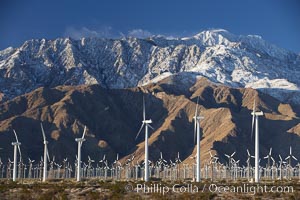
Wind turbines and Mount San Jacinto, rise above the flat floor of the San Gorgonio Pass near Palm Springs, provide electricity to Palm Springs and the Coachella Valley.
Location: San Gorgonio Pass, Palm Springs, California
Image ID: 22241
Location: San Gorgonio Pass, Palm Springs, California
Image ID: 22241
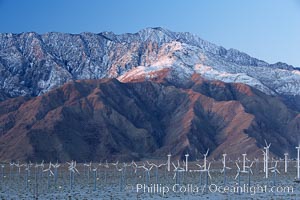
Wind turbines rise above the flat floor of the San Gorgonio Pass near Palm Springs, with snow covered Mount San Jacinto in the background, provide electricity to Palm Springs and the Coachella Valley.
Location: San Gorgonio Pass, Palm Springs, California
Image ID: 22243
Location: San Gorgonio Pass, Palm Springs, California
Image ID: 22243
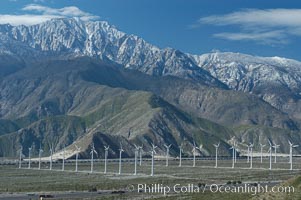
Wind turbines overlooking Interstate 10 provide electricity to Palm Springs and the Coachella Valley. San Gorgonio pass, San Bernardino mountains.
Location: San Gorgonio Pass, Palm Springs, California
Image ID: 06853
Location: San Gorgonio Pass, Palm Springs, California
Image ID: 06853

Wind turbines provide electricity to Palm Springs and the Coachella Valley. San Gorgonio pass, San Bernardino mountains.
Location: San Gorgonio Pass, Palm Springs, California
Image ID: 06854
Location: San Gorgonio Pass, Palm Springs, California
Image ID: 06854
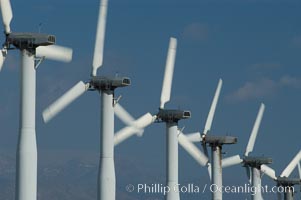
Wind turbines provide electricity to Palm Springs and the Coachella Valley. San Gorgonio pass, San Bernardino mountains.
Location: San Gorgonio Pass, Palm Springs, California
Image ID: 06855
Location: San Gorgonio Pass, Palm Springs, California
Image ID: 06855

Wind turbines provide electricity to Palm Springs and the Coachella Valley. San Gorgonio pass, San Bernardino mountains.
Location: San Gorgonio Pass, Palm Springs, California
Image ID: 06858
Location: San Gorgonio Pass, Palm Springs, California
Image ID: 06858

Wind turbines provide electricity to Palm Springs and the Coachella Valley. San Gorgonio pass, San Bernardino mountains.
Location: San Gorgonio Pass, Palm Springs, California
Image ID: 06859
Location: San Gorgonio Pass, Palm Springs, California
Image ID: 06859

Wind turbines provide electricity to Palm Springs and the Coachella Valley. San Gorgonio pass, San Bernardino mountains.
Location: San Gorgonio Pass, Palm Springs, California
Image ID: 06860
Location: San Gorgonio Pass, Palm Springs, California
Image ID: 06860
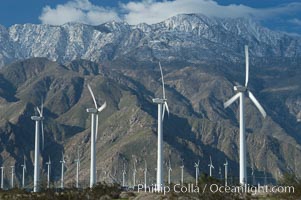
Wind turbines provide electricity to Palm Springs and the Coachella Valley. San Gorgonio pass, San Bernardino mountains.
Location: San Gorgonio Pass, Palm Springs, California
Image ID: 06861
Location: San Gorgonio Pass, Palm Springs, California
Image ID: 06861
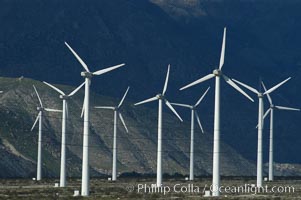
Wind turbines provide electricity to Palm Springs and the Coachella Valley. San Gorgonio pass, San Bernardino mountains.
Location: San Gorgonio Pass, Palm Springs, California
Image ID: 06862
Location: San Gorgonio Pass, Palm Springs, California
Image ID: 06862